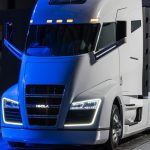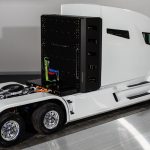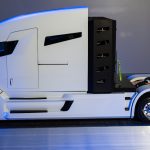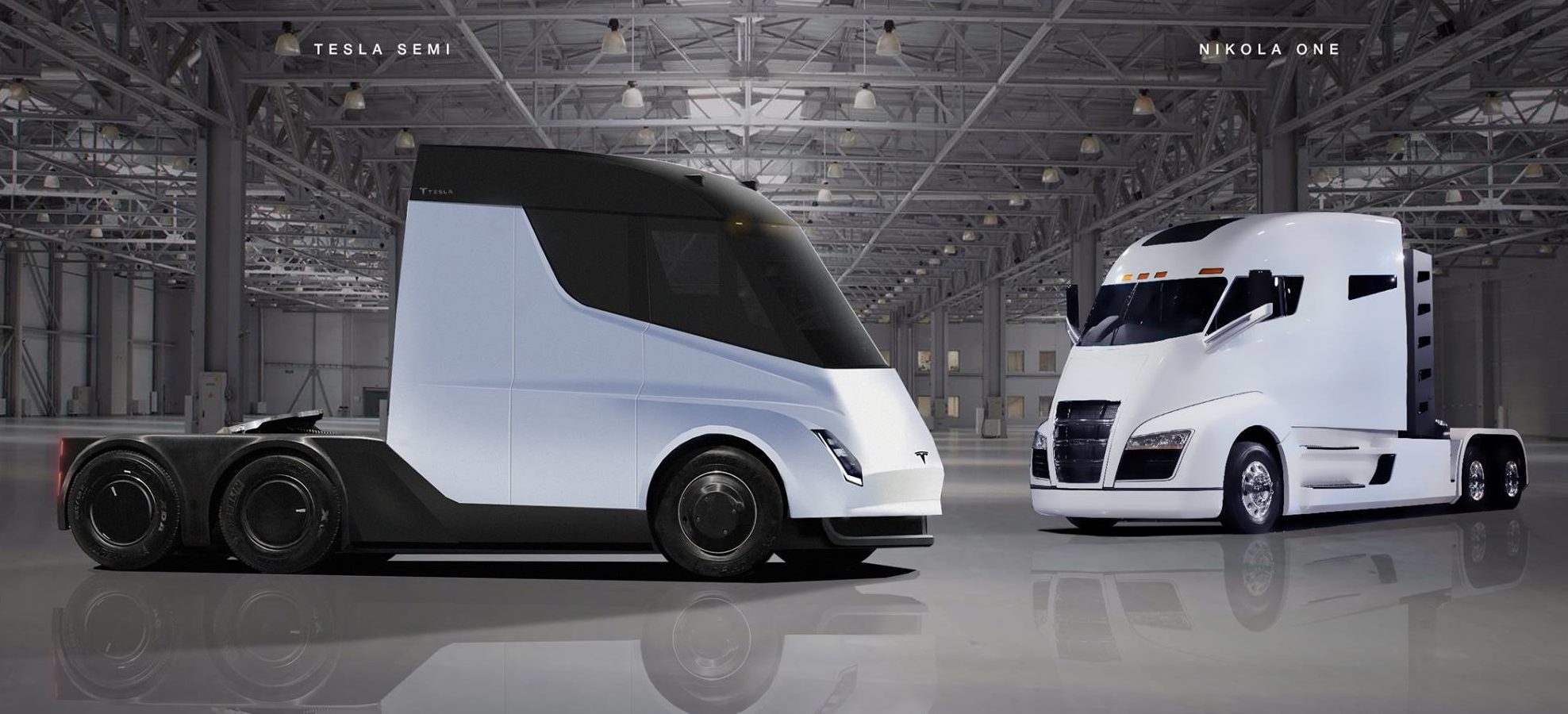
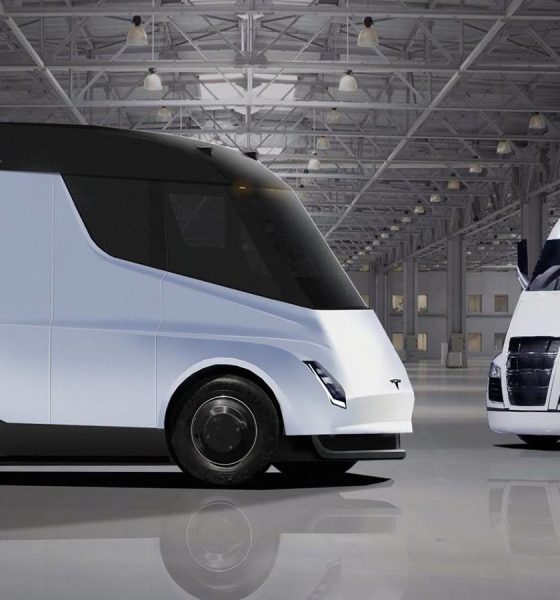
News
Tesla Semi rival Nikola throws shade, claims $8 billion in pre-orders, 100% reservation refunds
Tesla Semi rival Nikola Motors recently threw some shade at the Elon Musk-led company, stating that it will be refunding 100% of the reservations placed for its hydrogen-electric trucks and boasting that it had already received over $8 billion worth of pre-orders. Nikola also included what appears to be a pointed statement about Tesla’s finances, stating that it would not use its reservation holders’ money to operate its business.
Nikola’s bold declarations were posted on the company’s official Twitter account. According to the company’s tweets, Nikola customers could now reserve their trucks — the sleeper semi-truck Nikola One and the day cab Nikola Two — at zero cost. The startup also promised that refunds for those who have already placed reservations for their vehicles would be processed within 60 days.
“Great news! All reservations will be refunded 100%, and you won’t lose your place in line. We don’t use your money to operate our business. We want everyone to know we have never used a dollar of deposit money in the history of our company. All deposits will be refunded < 60 days.
“You can now reserve a Nikola One or Two without any deposit at https://nikolamotor.com/motor. With over 8+ billion in pre-order reservations, who needs deposits anyways!”
- Credit: Nikola Motor
- The Nikola One.
- The Nikola One
Nikola’s statements are very bold, considering that the company is yet to start the production of its hydrogen-electric semi trucks. Earlier this year, Nikola announced its plans to build a $1 billion factory in Phoenix, AZ, which will house facilities that would manufacture its offerings, according to a Fortune report. According to Nikola CEO Trevor Milton, the trucking startup will complete the move to the Phoenix, AZ site by October 2018. Production for the Nikola One and the Nikola Two is estimated to begin in 2021.
Nikola’s hydrogen-electric trucks boast impressive specs. According to the trucking startup, its long-haulers would be able to offer up to 1,000 hp, up to 2,000 ft-lbs of torque, and up to 1,000 miles of range. Unlike the Tesla Semi, however, Nikola’s vehicles are not all-electric. Instead, they would run on hydrogen fuel cells, which, as we noted in a previous report, might give the startup some difficulties when it begins the rollout of its vehicles.
Hydrogen, after all, is usually derived from natural gas. Taking the process back a step or two, natural gas is often the result of fracking, a practice that is quite controversial in terms of its impact on the environment. Fracking, at its worst, can pollute the land and groundwater.
If there’s anything that Nikola can learn from Tesla, it is that producing a vehicle takes a lot of effort and resources. The challenges that Tesla is facing with the production of the Model 3 — a vehicle designed to be simple to build — is a testament to just how complex the manufacturing business really is. Thus, Nikola’s confident Twitter declarations, as well as its seemingly pointed remarks at Tesla, might end up as a case of premature hubris for the trucking startup.
Tesla’s own long-hauler, the Semi, after all, is already testing on public roads. Just last month, Tesla’s Semi prototypes have begun delivering cargo from Gigafactory 1 in Nevada to the Fremont factory in California. Sightings of the long-haulers have also been reported in several places across the country, including St. Louis, MO, Dallas, TX, and more recently, in Des Moines, IA. The production of the Tesla Semi is expected to begin in 2019, giving it a headstart over Nikola’s trucks.

Elon Musk
Starlink passes 9 million active customers just weeks after hitting 8 million
The milestone highlights the accelerating growth of Starlink, which has now been adding over 20,000 new users per day.

SpaceX’s Starlink satellite internet service has continued its rapid global expansion, surpassing 9 million active customers just weeks after crossing the 8 million mark.
The milestone highlights the accelerating growth of Starlink, which has now been adding over 20,000 new users per day.
9 million customers
In a post on X, SpaceX stated that Starlink now serves over 9 million active users across 155 countries, territories, and markets. The company reached 8 million customers in early November, meaning it added roughly 1 million subscribers in under seven weeks, or about 21,275 new users on average per day.
“Starlink is connecting more than 9M active customers with high-speed internet across 155 countries, territories, and many other markets,” Starlink wrote in a post on its official X account. SpaceX President Gwynne Shotwell also celebrated the milestone on X. “A huge thank you to all of our customers and congrats to the Starlink team for such an incredible product,” she wrote.
That growth rate reflects both rising demand for broadband in underserved regions and Starlink’s expanding satellite constellation, which now includes more than 9,000 low-Earth-orbit satellites designed to deliver high-speed, low-latency internet worldwide.
Starlink’s momentum
Starlink’s momentum has been building up. SpaceX reported 4.6 million Starlink customers in December 2024, followed by 7 million by August 2025, and 8 million customers in November. Independent data also suggests Starlink usage is rising sharply, with Cloudflare reporting that global web traffic from Starlink users more than doubled in 2025, as noted in an Insider report.
Starlink’s momentum is increasingly tied to SpaceX’s broader financial outlook. Elon Musk has said the satellite network is “by far” the company’s largest revenue driver, and reports suggest SpaceX may be positioning itself for an initial public offering as soon as next year, with valuations estimated as high as $1.5 trillion. Musk has also suggested in the past that Starlink could have its own IPO in the future.
News
NVIDIA Director of Robotics: Tesla FSD v14 is the first AI to pass the “Physical Turing Test”
After testing FSD v14, Fan stated that his experience with FSD felt magical at first, but it soon started to feel like a routine.

NVIDIA Director of Robotics Jim Fan has praised Tesla’s Full Self-Driving (Supervised) v14 as the first AI to pass what he described as a “Physical Turing Test.”
After testing FSD v14, Fan stated that his experience with FSD felt magical at first, but it soon started to feel like a routine. And just like smartphones today, removing it now would “actively hurt.”
Jim Fan’s hands-on FSD v14 impressions
Fan, a leading researcher in embodied AI who is currently solving Physical AI at NVIDIA and spearheading the company’s Project GR00T initiative, noted that he actually was late to the Tesla game. He was, however, one of the first to try out FSD v14.
“I was very late to own a Tesla but among the earliest to try out FSD v14. It’s perhaps the first time I experience an AI that passes the Physical Turing Test: after a long day at work, you press a button, lay back, and couldn’t tell if a neural net or a human drove you home,” Fan wrote in a post on X.
Fan added: “Despite knowing exactly how robot learning works, I still find it magical watching the steering wheel turn by itself. First it feels surreal, next it becomes routine. Then, like the smartphone, taking it away actively hurts. This is how humanity gets rewired and glued to god-like technologies.”
The Physical Turing Test
The original Turing Test was conceived by Alan Turing in 1950, and it was aimed at determining if a machine could exhibit behavior that is equivalent to or indistinguishable from a human. By focusing on text-based conversations, the original Turing Test set a high bar for natural language processing and machine learning.
This test has been passed by today’s large language models. However, the capability to converse in a humanlike manner is a completely different challenge from performing real-world problem-solving or physical interactions. Thus, Fan introduced the Physical Turing Test, which challenges AI systems to demonstrate intelligence through physical actions.
Based on Fan’s comments, Tesla has demonstrated these intelligent physical actions with FSD v14. Elon Musk agreed with the NVIDIA executive, stating in a post on X that with FSD v14, “you can sense the sentience maturing.” Musk also praised Tesla AI, calling it the best “real-world AI” today.
News
Tesla AI team burns the Christmas midnight oil by releasing FSD v14.2.2.1
The update was released just a day after FSD v14.2.2 started rolling out to customers.

Tesla is burning the midnight oil this Christmas, with the Tesla AI team quietly rolling out Full Self-Driving (Supervised) v14.2.2.1 just a day after FSD v14.2.2 started rolling out to customers.
Tesla owner shares insights on FSD v14.2.2.1
Longtime Tesla owner and FSD tester @BLKMDL3 shared some insights following several drives with FSD v14.2.2.1 in rainy Los Angeles conditions with standing water and faded lane lines. He reported zero steering hesitation or stutter, confident lane changes, and maneuvers executed with precision that evoked the performance of Tesla’s driverless Robotaxis in Austin.
Parking performance impressed, with most spots nailed perfectly, including tight, sharp turns, in single attempts without shaky steering. One minor offset happened only due to another vehicle that was parked over the line, which FSD accommodated by a few extra inches. In rain that typically erases road markings, FSD visualized lanes and turn lines better than humans, positioning itself flawlessly when entering new streets as well.
“Took it up a dark, wet, and twisty canyon road up and down the hill tonight and it went very well as to be expected. Stayed centered in the lane, kept speed well and gives a confidence inspiring steering feel where it handles these curvy roads better than the majority of human drivers,” the Tesla owner wrote in a post on X.
Tesla’s FSD v14.2.2 update
Just a day before FSD v14.2.2.1’s release, Tesla rolled out FSD v14.2.2, which was focused on smoother real-world performance, better obstacle awareness, and precise end-of-trip routing. According to the update’s release notes, FSD v14.2.2 upgrades the vision encoder neural network with higher resolution features, enhancing detection of emergency vehicles, road obstacles, and human gestures.
New Arrival Options also allowed users to select preferred drop-off styles, such as Parking Lot, Street, Driveway, Parking Garage, or Curbside, with the navigation pin automatically adjusting to the ideal spot. Other refinements include pulling over for emergency vehicles, real-time vision-based detours for blocked roads, improved gate and debris handling, and Speed Profiles for customized driving styles.
